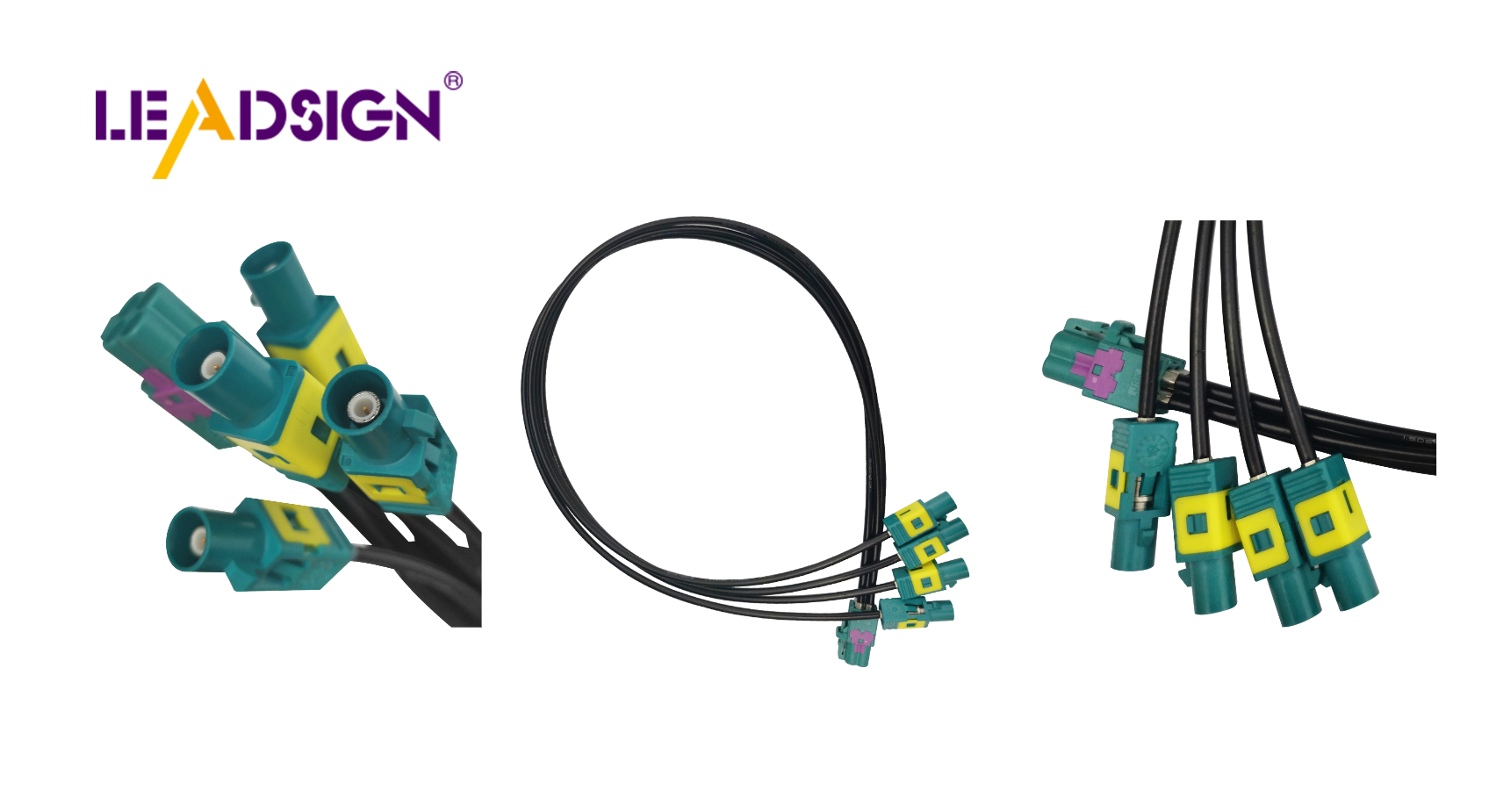Automotive Wire Choices: Why They Matter

Choosing the right automotive wire is crucial as it directly impacts a vehicle's performance, safety, and longevity. Automotive wires, used within vehicles, must withstand heat effectively. Selecting quality wires enhances vehicle operation and durability. The appropriate wire can prevent hazards and ensure efficient vehicle functionality. Therefore, understanding automotive wire is essential for anyone repairing or manufacturing vehicles. Additionally, considering the right RF cable is important for optimal signal transmission in automotive applications.
Standards and Materials in Automotive Wire
Why Standards Matter
Car wires must meet rules to be safe and reliable. These rules help make wires that work well in today's cars.
SAE J-1128
The SAE J-1128 rule is important for car wires. It tells what low-voltage cables need in cars. Following this rule means wires can handle car power and weather.
Other Important Rules
Besides SAE J-1128, other rules affect car wire making. ISO and UL rules cover things like insulation and heat resistance. Meeting these rules ensures wires work well in different situations.
Material Advantages
The materials used in car wires affect how they work. Different materials have special benefits that improve the wire's job.
Copper for Good Flow
Copper is best for car wires because it conducts electricity well. It helps power move easily, saving energy and boosting car performance. Copper's good flow makes it great for important car parts.
Flexibility and Strength
Flexibility and strength are key for car wires. Flexible wires fit into tight spots, while strong ones last through tough conditions. This mix keeps wires working over time, helping the car last longer.
Types of Automotive Wires and Their Uses
Insulated Wires
Car wires have different insulation. Each kind helps in special ways.
PVC Insulated Wires
PVC Insulated Wires use a cover called polyvinyl chloride. This cover stops water, oil, and scratches. People call it primary wire or GPT. These wires work in car systems up to 60 volts DC or 25 volts AC. They are used for lights, heaters, horns, and switches.
XLPE Insulated Wires
XLPE Insulated Wires have cross-linked polyethylene covers. They handle high heat well. This makes them great for inside car wiring. They last long and keep the car's electric parts working well.
Heat Resistance Features
Handling heat is key for car wires, especially near engines.
High-Temperature Uses
Car wires face tough spots under the hood. Hot places need strong wires that stay good even when hot. XLPE Insulated Wires are perfect here, giving strong protection over time.
Environmental Needs
Things like wetness and chemicals can harm wires. PVC Insulated Wires fight these problems, keeping things running right in many places. Picking the best cover type helps keep cars safe and working well.
RF Cables in Cars
Why RF Cables Matter
RF cables are important in cars. They help different electronic parts talk to each other. These cables send radio signals needed for music, maps, and calls. Good RF cables make car systems work well.
Handling Different Signals
RF cables need to handle many signals. They support things like GPS that need clear signals. Picking the right cable stops problems and makes driving better.
Protecting Signals
Shielding keeps RF cables safe from outside noise. It stops signal loss and keeps data clear. This is key when many electronics run at once in a car.
Tough Environments
RF cables must be strong for tough conditions. Cars face bad weather, so these cables must last.
Staying Strong
RF cables must handle heat, wetness, and shaking. Good ones work well even when it's hard, keeping car electronics working.
Cutting Noise
Cutting noise is crucial for RF cables. Outside sounds can mess up signals. Cables with good noise cutting keep communication clear and steady.
HFM Connector System
The HFM Connector System is a big step in car wire tech. It is small and saves space inside cars. Engineers like it because it fits in tight spots, making the car's inside more useful.
Space-Saving Design
The HFM Connector System cuts space use by 80%. This lets makers add more parts without needing extra room. Its small size fits well in new car designs that need tiny and smart solutions.
High-Speed Data Transmission
Fast data moving is key for today's smart car systems. The HFM Connector System moves data up to 28 Gbps fast. This helps parts talk quickly, which is needed for things like maps and driver help systems.
Real-World Applications
New car wire tech, like the HFM Connector System, helps make cool car features. These features make driving better and improve how cars work.
Autonomous Driving
Self-driving cars need smart wire systems a lot. The HFM Connector System helps move fast data for self-driving cars to work right. It makes sure sensors and cameras talk well so the car drives safely.
Infotainment Systems
Today's fun systems in cars need good connections and fast data moves. The HFM Connector System gives strong links for these needs. It supports media streaming, GPS maps, and traffic updates, making driving more fun.
Choosing the right automotive wire is very important. You need to think about rules, materials, and new technology. Picking the right wire helps cars work well for a long time. New tech, like the HFM Connector System, shows why keeping up with changes matters.
Important Things to Think About:
Wires must handle voltage and current to stop problems.
Using future-ready cables saves money on fixes later.
Knowing these things helps people choose better wires. This makes cars safer and work better.
See Also
Maximizing Automotive Data Transmission with HSD Connectors
Boosting Automotive Data Transfer: High-Speed Connector Significance
Significance of Fakra Connectors in Automotive Applications
Fakra Automotive Connectors: Vital for Modern Vehicle Connectivity
Enhancing Automotive Data Flow: Advanced Connectors and Cables

